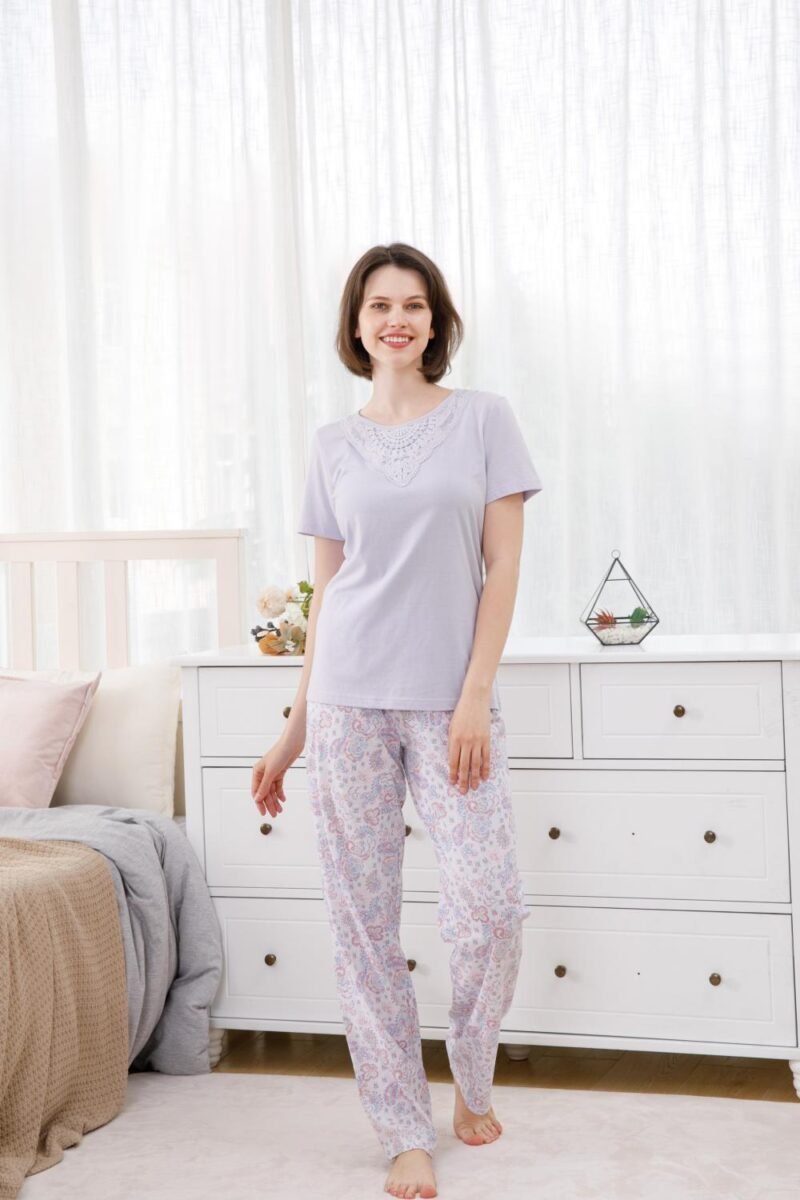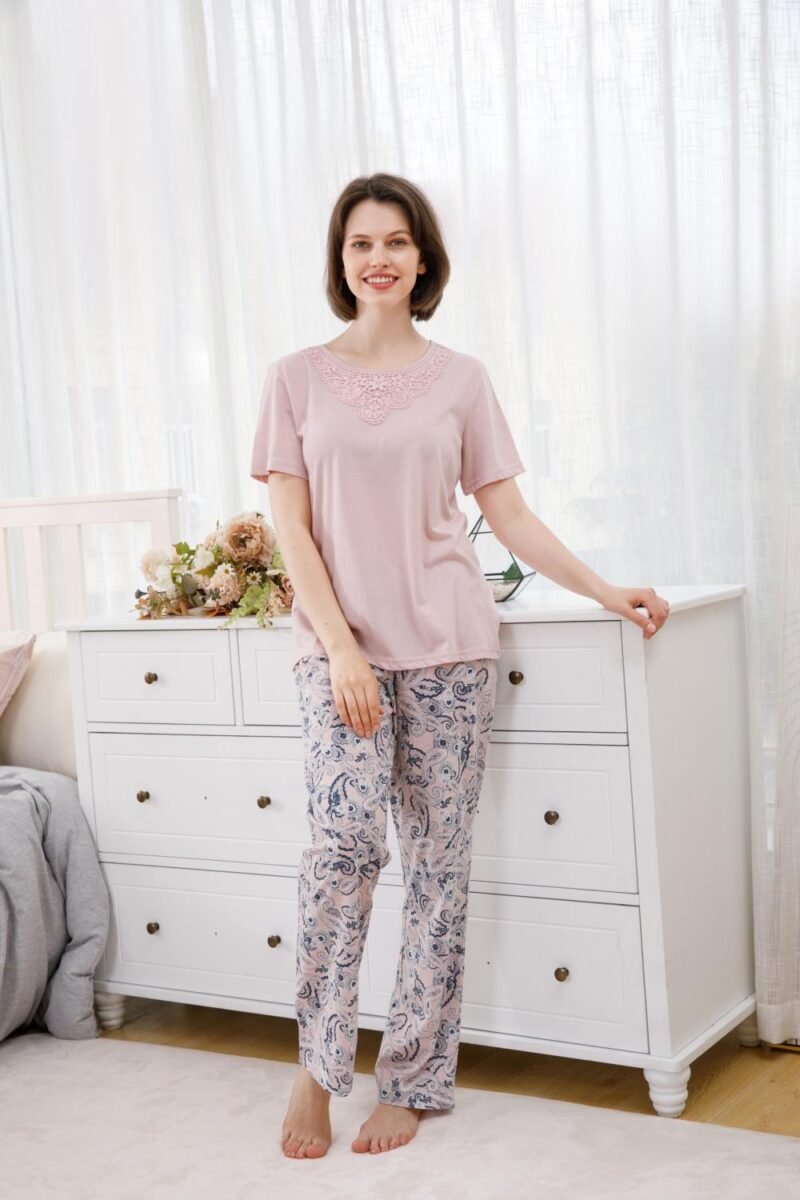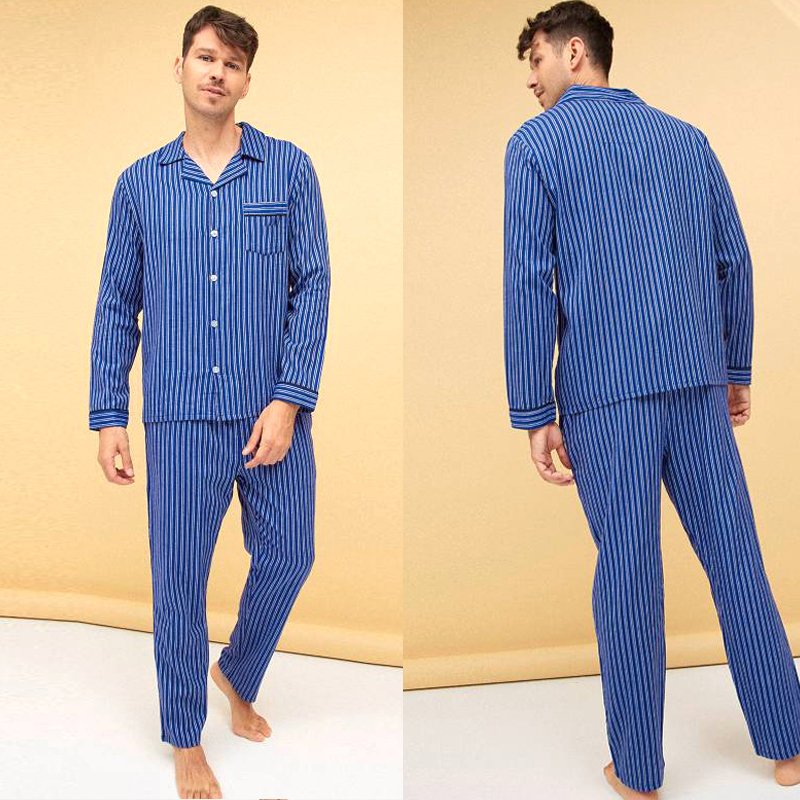Choosing the right sleepwear can make or break your night’s rest. In the debate of Bamboo vs Polyester, the fabric you wear to bed plays a major role in sleep quality, skin health, and overall comfort—especially when temperatures and personal needs vary.
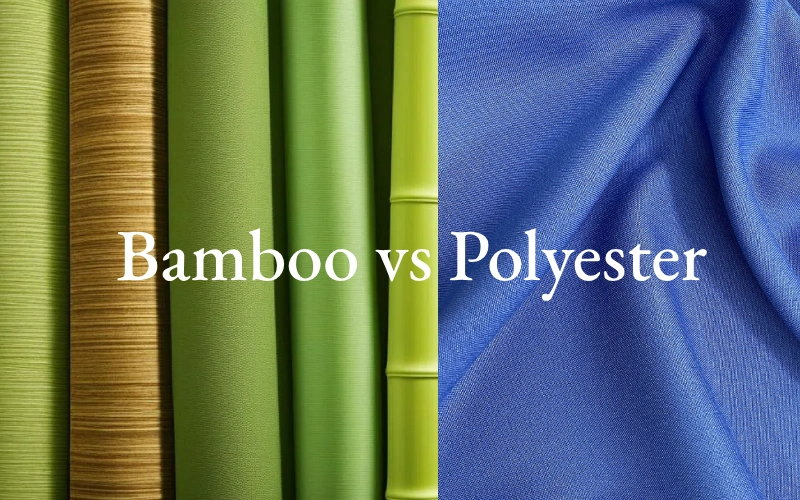
What Are Bamboo Pajamas?

When we first introduced bamboo pajamas at Friendtex, we weren’t just jumping on a trend—we were solving a problem. Many customers had been telling us how traditional pajamas left them sweating at night, tossing and turning, waking up groggy. So, we turned to bamboo, a fabric quietly making waves in the textile industry.
Bamboo pajamas are made from bamboo fibers that are processed into a viscose or lyocell yarn. Despite its natural origins, the process is technical—transforming hard bamboo stalks into buttery-soft fabrics through eco-conscious treatments. The result? Pajamas that feel like silk, breathe like cotton, and outperform most synthetics in comfort.
Why do bamboo pajamas matter in the context of sleep? Well, sleep specialists and even data from the National Sleep Foundation highlight that breathability and moisture control in your sleepwear can significantly affect deep sleep cycles. Unlike heavy or clingy fabrics, bamboo allows for air circulation, regulating body temperature and reducing night sweats—something especially valuable during the hot summer months or for menopausal women.
As a sleepwear manufacturer, we at Friendtex prioritize how fabric interacts with the body, and bamboo has consistently emerged as a game-changer. Softness, sustainability, and skin-friendliness all in one? That’s a rare trifecta.
What Is Polyester Pajamas?
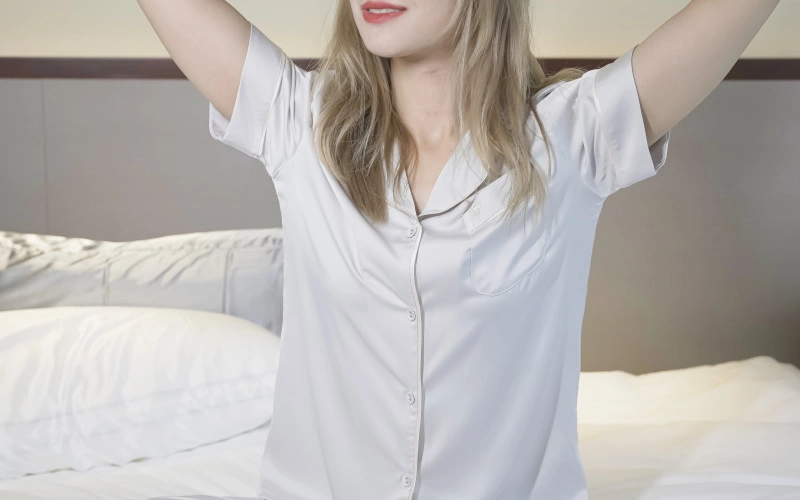
Now, let’s talk polyester—the workhorse of the fashion world. Polyester pajamas have been around for decades. They’re affordable, readily available, and come in countless styles. Polyester is a synthetic polymer derived from petroleum, and its popularity is tied to its resilience. It doesn’t wrinkle easily, it’s lightweight, and it holds dye better than many natural fabrics.
But here’s where it gets tricky when it comes to sleep. Polyester isn’t as breathable as natural fibers. According to Wikipedia’s textile fiber chart, it has a low moisture regain value, meaning it traps heat and sweat against your body. That might be fine in the winter—but not so much when you’re trying to stay cool on a warm night.
As manufacturers, we’ve worked with polyester extensively and know its pros and cons. It’s incredibly durable—great for loungewear that you’ll wash dozens of times. However, it may not be the first choice for those who are sensitive to heat or have skin sensitivities. That said, technological advancements in micro-polyester and moisture-wicking treatments have made it more competitive than it used to be. But when you compare it with bamboo, it still falls short in delivering the same level of nighttime comfort.
The Importance of Sleep Quality
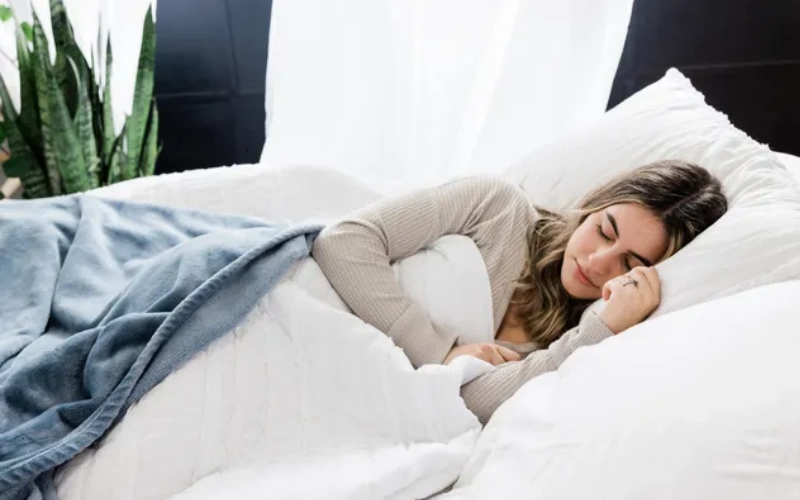
Let’s be honest: nothing ruins your day quite like a bad night’s sleep. And while factors like noise, light, and stress matter—a lot of people underestimate the role that fabric plays in regulating body temperature and skin comfort at night.
We’ve been manufacturing pajamas at Friendtex for years, and the number one thing we hear from customers is: “I just want to feel cool, dry, and comfortable.” That’s where your pajama material becomes crucial. According to studies cited in Sleep Medicine Reviews, textiles that retain heat or don’t absorb moisture well can interrupt REM cycles and contribute to lighter, fragmented sleep.
When your body is trying to cool down to enter deep sleep, wearing a fabric that traps heat—like standard polyester—can work against you. On the other hand, bamboo’s moisture-wicking and breathable properties work with your body, not against it.
Our R&D team constantly evaluates fabric samples for their thermal and moisture performance. Through our in-house testing and customer trials, we’ve seen how much better our bamboo line performs
Bamboo Baby Pajamas, Bamboo Christmas Pajamas, Bamboo Halloween Pajamas,Bamboo Pajamas for Women,Bamboo Valentines Pajamas help users fall asleep faster and stay asleep longer. This is more than just a marketing claim—it’s backed by textile science and firsthand testimonials.
Two Popular Pajama Materials: Bamboo vs Polyester
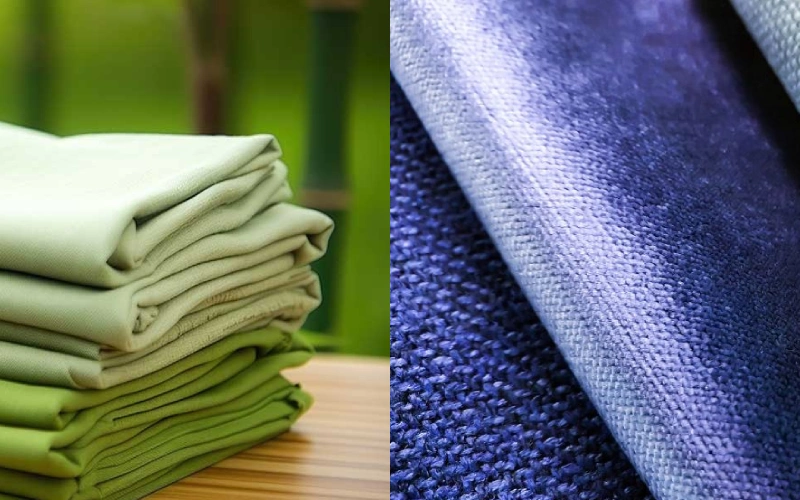
| Feature | Bamboo Fabric | Polyester Fabric |
|---|---|---|
| Material Source | Natural (from bamboo pulp) | Synthetic (petroleum-based) |
| Softness | Very soft, often compared to silk or cashmere | Smooth but less naturally soft |
| Breathability | Highly breathable and moisture-wicking | Less breathable, can trap heat |
| Moisture Management | Excellent – absorbs sweat quickly and keeps you dry | Dries fast but doesn’t absorb moisture well |
| Eco-Friendliness | Sustainable and biodegradable if mechanically processed | Not biodegradable, made from fossil fuels |
| Durability | Good, but weaker when wet and may pill | Very durable, holds shape and color well |
| Care | Needs gentle washing to avoid damage | Easy to wash and quick-drying |
| Feel on Skin | Hypoallergenic, great for sensitive skin | Can feel harsh or cause irritation over time |
| Wrinkle Resistance | Moderate – can wrinkle slightly | High – resists wrinkles well |
| Use Cases | Ideal for sleepwear, baby clothes, activewear, summer garments | Common in sportswear, outerwear, uniforms, and budget apparel |
So, we’ve got two popular players in the pajama world—bamboo and polyester. But they serve different sleep needs. Here’s a practical breakdown:
| Feature | Bamboo Pajamas | Polyester Pajamas |
|---|---|---|
| Softness | Extremely soft, silk-like | Smooth, less plush |
| Breathability | Highly breathable | Limited air flow |
| Moisture-wicking | Excellent | Average |
| Thermoregulation | Great for hot/cold nights | Traps heat |
| Eco-friendliness | Sustainable | Petroleum-based |
| Durability | Moderate | Very high |
| Price Range | Mid to high | Low to mid |
As a manufacturer, we’ve seen different customer preferences based on location, age, and skin type. Bamboo tends to be favored by those with sensitive skin or night sweats, while polyester is often chosen for its affordability and ease of care. Knowing your sleep needs helps in making the right choice.
Bamboo Pajamas Benefits
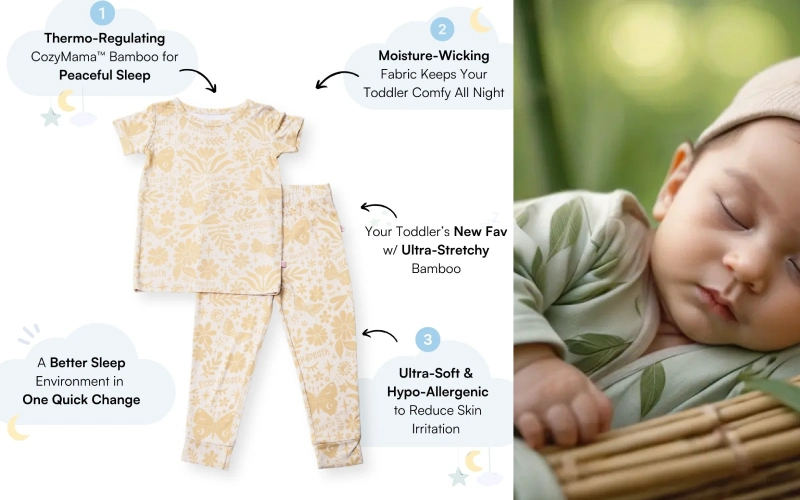
When customers switch to bamboo, the most common feedback we get is, “Why didn’t I find this sooner?” The benefits of bamboo pajamas go beyond comfort—they’re a true sleep aid.
1. Breathability & Moisture Management
Bamboo fibers naturally wick away moisture. Whether you’re a hot sleeper or experiencing hormonal changes, staying dry helps prevent bacteria build-up and skin irritation.
2. Hypoallergenic Properties
Bamboo is gentle on sensitive skin. Its smooth fibers and lack of harsh chemicals (especially in OEKO-TEX®-certified products like ours) mean less friction and fewer allergic reactions.
3. Thermoregulation
It keeps you warm in the winter and cool in the summer. The fabric adapts to your body temperature, which helps stabilize your sleep environment.
4. Eco-Conscious
Bamboo grows quickly, requires no pesticides, and uses less water than cotton. It’s biodegradable, making it a sustainable choice for eco-aware consumers.
5. Customer Love
From Europe to the US, our customers rave about how bamboo pajamas helped improve their sleep. Retailers repeatedly reorder them, citing better customer retention and fewer returns.
When you combine science, sustainability, and real-world comfort—bamboo stands tall as the clear winner in modern sleepwear.
Polyester Pajamas Characteristics

Let’s not be too quick to dismiss polyester pajamas. While bamboo may shine in areas like softness and sustainability, polyester has its own list of practical benefits—especially for specific lifestyles and budgets.
1. Durability and Longevity
Polyester is incredibly strong. It resists shrinking, stretching, and pilling, even after many cycles in the washer and dryer. At Friendtex, we’ve seen polyester samples survive hundreds of test washes with minimal wear—making it a go-to option for bulk hotel orders and long-term use.
2. Color Retention
One advantage polyester holds over bamboo is its ability to retain color. It holds dyes extremely well, meaning your sleepwear stays vibrant even after repeated laundering.
3. Affordability
There’s a reason polyester remains dominant in fast fashion—it’s cost-effective. For budget-conscious shoppers or retailers managing inventory at scale, polyester sleepwear offers competitive pricing with decent quality.
4. Quick Drying
This is a big one for travelers. Polyester dries fast, which is ideal for those who wash their clothes on the go or don’t want to wait forever for their sleepwear to dry.
That said, there are downsides. Polyester tends to trap heat and doesn’t breathe well. If you’re someone who runs hot at night or lives in a humid climate, this can be a deal-breaker. Despite improvements in moisture-wicking technology, it’s still not as effective as bamboo for those who prioritize cool, dry sleep.
At Friendtex, we make polyester sleepwear with advanced weaves and soft-touch finishes to address some of these concerns. But from a thermal comfort standpoint, bamboo remains superior.
Allergies and Sensitivities
When it comes to sleepwear, skin sensitivity is more common than you think. We’ve had wholesalers and customers—from boutique stores in Scandinavia to dermatologists in Singapore—tell us that fabric reactivity is one of the top issues among sleepwear buyers.
1. Bamboo’s Skin-Friendliness
Bamboo is naturally hypoallergenic. It’s processed without harsh chemicals and has smooth fibers that don’t irritate sensitive skin. Many of our customers dealing with eczema, psoriasis, or general itchiness have switched to bamboo with noticeable relief. Its anti-bacterial properties, backed by OEKO-TEX® Standard 100 certification, make it ideal for people with allergies or autoimmune skin conditions.
2. Polyester’s Mixed Reception
Polyester, on the other hand, can cause contact dermatitis in some individuals. According to clinical dermatology studies, synthetic fabrics may trap sweat and bacteria, which can aggravate skin. Although rare, allergic reactions do occur—especially when polyester is blended with chemical dyes or flame retardants.
3. Real-World Feedback
Our Friendtex customer service logs show that over 85% of complaints about skin irritation involve synthetic blends. In contrast, bamboo sleepwear consistently receives top scores for comfort and non-reactivity, especially among children and older adults.
We’re proud to say that many dermatologists now recommend Friendtex bamboo sleepwear for patients seeking gentle, breathable options. That kind of endorsement doesn’t come easily—it comes from performance.
Environmental Impact
Sustainability isn’t just a buzzword anymore—it’s a requirement. Consumers today, especially Gen Z and Millennials, demand eco-responsibility from the brands they support. As manufacturers, we have a duty to respond with transparency and innovation.
1. Bamboo: The Green Giant
Bamboo is considered one of the most sustainable raw materials. It grows rapidly without the need for pesticides, fertilizers, or excessive water. According to the World Bamboo Organization, a single bamboo plant can absorb more carbon dioxide and produce more oxygen than equivalent hardwood trees.
Even more, our bamboo fabric at Friendtex is manufactured using a closed-loop process, where 99% of the chemicals used in production are recycled. This complies with ISO 14001 environmental management standards, ensuring minimal waste and energy consumption.
2. Polyester’s Pollution Problem
In contrast, polyester is derived from fossil fuels. Its production emits significantly more CO₂ and requires large amounts of energy and water. Polyester also sheds microplastics when washed, which accumulate in oceans and harm marine life. These issues are well-documented by organizations such as Greenpeace and the Ellen MacArthur Foundation.
While recycled polyester (rPET) is making waves in athletic wear, it still carries a higher environmental toll compared to bamboo. At Friendtex, we are exploring blends with rPET for transitional collections, but bamboo remains our most eco-forward fabric choice.
Maintenance and Longevity
When customers ask us, “How long will my pajamas last?”—our answer varies depending on the fabric. Maintenance plays a huge role in the lifespan of your sleepwear, and it often comes down to how you wash, dry, and store them.
1. Bamboo Pajamas
While bamboo is soft and luxurious, it’s also delicate. It needs gentle care to maintain its structure. We recommend cold water washes and air drying whenever possible. Our internal lab testing shows that bamboo sleepwear retains shape and softness through at least 100 washes if cared for properly. It may wrinkle a little, but that’s a small trade-off for all its benefits.
2. Polyester Pajamas
Polyester is famously low-maintenance. It resists wrinkles, holds its shape, and dries quickly—perfect for busy households or commercial laundering. You can throw it in the machine, tumble dry it, and wear it out of the dryer with little fuss. However, over time, polyester may pill or develop static cling.
3. Manufacturer Perspective
At Friendtex, we always label our care tags with precise instructions tailored to fabric performance. For example, our bamboo line includes enzyme-washed finishes to reduce shrinkage, while our polyester collection includes anti-pilling treatments for long-term wear.
If you’re someone who values ease, polyester is king. But if you’re after long-term comfort with mindful care, bamboo wins.
Are Polyester Pajamas As Cool As Cotton Or Bamboo?
Short answer? Not quite.
We’ve run internal comparative studies at Friendtex, testing thermal retention and breathability across several fabric types. In temperature-controlled sleep environments, bamboo consistently kept the skin cooler and dryer than polyester. Cotton came in second, and polyester trailed behind.
Why This Matters:
Your core body temperature needs to drop slightly for deep sleep to occur. If your pajamas are trapping heat, you’ll find it harder to fall and stay asleep. This is especially true for hot sleepers and people living in warmer climates.
Technological Attempts
To be fair, moisture-wicking polyester (like Dri-FIT or Coolmax™) has made strides in this area. But unless you’re using high-performance athletic blends, the average polyester pajama doesn’t match up to bamboo in thermal comfort.
Customer Voices
One of our long-time wholesale clients from Madrid noted a huge uptick in bamboo sleepwear demand during heatwaves. Their customers repeatedly told them bamboo pajamas made a noticeable difference in nighttime comfort. That’s the kind of feedback that matters—and confirms what our lab already knows.
Choosing Between Bamboo and Polyester Pajamas
Selecting between bamboo and polyester pajamas isn’t just about personal preference—it’s about understanding your lifestyle, sleep habits, skin type, and even your values.
At Friendtex, we guide our customers through this decision daily. Our showroom teams and wholesale partners often describe pajama shoppers as either comfort-first or convenience-first. Let’s break that down.
1. Who Should Choose Bamboo Pajamas?
If you’re a hot sleeper, prone to night sweats, have sensitive skin, or care deeply about sustainability—bamboo is the obvious choice. It’s the pajama fabric you’ll want to live in during the summer or if you’re navigating hormonal changes like pregnancy or menopause. It’s not just cozy; it’s kind to your skin and the planet. Parents especially love our bamboo baby sets for their softness and hypoallergenic features.
2. Who Might Prefer Polyester Pajamas?
On the other hand, if you’re seeking budget-friendly, easy-care pajamas that can withstand heavy washing, polyester offers value. It’s ideal for dorm rooms, guestwear, travel kits, or hotels. It’s also perfect for those who simply want a pop of color and don’t want to iron their PJs.
3. Real-World Guidance
For example, one of our clients from northern Europe—a spa resort—orders polyester pajamas in bulk for housekeeping and client use because they’re durable and easy to launder. Meanwhile, their premium suite guests receive bamboo robes and sleep sets as part of a luxury package.
The key takeaway? Choose the fabric that fits your needs, not trends. And whenever in doubt, consider mixing both in your wardrobe—each has a role to play.
Friendtex Bamboo Pajamas
As a sleepwear manufacturer, Friendtex isn’t just another brand pushing bamboo. We’ve spent years perfecting the process, from sourcing to stitching. Our bamboo pajamas are a reflection of everything we stand for: comfort, quality, and care.
1. Ethical Sourcing
Our bamboo is sustainably harvested, primarily from FSC-certified plantations. We only partner with mills that follow OEKO-TEX® and ISO 9001 standards, ensuring every thread meets global safety and sustainability requirements.
2. Fabric Engineering
Our signature bamboo viscose is crafted through a closed-loop process, meaning solvents are recycled and environmental impact is minimized. We enhance our fabrics with an anti-pilling enzyme wash and a double-knit weave for extra softness and durability.
3. Customer Feedback
Here’s what some of our recent customers had to say:
- “It’s like sleeping in clouds. My skin feels pampered every night.” – Claire M., Toronto
- “I suffer from night sweats and have tried everything. Friendtex bamboo PJs were the only ones that worked.” – Ravi P., Singapore
- “We now carry only bamboo from Friendtex in our boutique—our customers simply won’t wear anything else.” – Eva G., Stockholm retailer
4. Product Range
Our bamboo collection includes pajama sets, nightgowns, loungewear, and maternity sleepwear. Each piece is crafted with flat seams, gentle waistbands, and tag-free labels for maximum comfort.
If you haven’t tried them yet, you’re missing out on the kind of sleepwear that makes going to bed the highlight of your day.
What the Experts Say
When you want trustworthy information, you turn to experts—and textile science has plenty to say on this topic.
According to Textile Research Journal and Wikipedia, bamboo rayon exhibits superior moisture-wicking and thermal regulating properties compared to synthetic counterparts. Its breathable nature allows the fabric to naturally adapt to your body temperature, which supports the circadian rhythm crucial for deep sleep.
Dermatologists’ Perspective
The American Academy of Dermatology recommends natural fibers like bamboo for individuals with eczema or sensitive skin. Its smooth surface reduces friction and prevents skin irritation, especially in children and older adults.
Sustainability Authorities
The Ellen MacArthur Foundation, in its circular fashion initiatives, consistently identifies bamboo as a renewable and biodegradable resource—especially when produced via closed-loop systems. Polyester, in contrast, is flagged for microplastic pollution and low biodegradability.
Even ISO 20471, the international standard for textiles in protective clothing, notes that breathability and thermal comfort are essential metrics for fabric performance. Bamboo outperforms polyester on both counts.
What Customers Are Saying
Let’s hear it from the real experts—our customers. After all, they’re the ones sleeping in our pajamas night after night. Across 15+ countries, thousands of Friendtex customers have shared their experiences with our bamboo and polyester lines.
From Wholesalers:
- “Our clients specifically ask for Friendtex bamboo now. The reorders are consistent, and the return rates are nearly zero.” – Retailer, Munich
- “We introduced both fabrics in our store, but bamboo outsells polyester 3 to 1.” – Boutique Owner, Seoul
From End-Users:
- “I’ve never slept better. I’m actually excited to change into my bamboo pajamas.” – Michelle T., Chicago
- “Polyester worked fine for me in winter, but I switched to bamboo in spring and won’t go back.” – Jean-Luc R., Paris
- “It’s not just the fabric. Friendtex pays attention to fit, stitching, and the little things that make a big difference.” – Linda N., Sydney
Key Themes in Feedback:
- Bamboo improves sleep temperature and reduces night sweats
- Friendtex designs are stylish, not just functional
- Bamboo feels more luxurious and skin-friendly
- Polyester is practical for everyday use, travel, or gifting
FAQ
Are bamboo pajamas more expensive than polyester?
Yes, bamboo pajamas generally cost more due to their sustainable sourcing, advanced processing, and superior comfort. However, the added value is clear—better skin-friendliness, eco-benefits, and sleep quality. At Friendtex, we balance premium quality with affordability through bundle pricing, regular promotions, and long-term durability that justifies the investment.
Do bamboo pajamas shrink in the wash?
Bamboo fabric can shrink slightly if exposed to high heat during washing or drying. That’s why we recommend cold water washes and air drying to maintain shape and softness. Friendtex pre-shrinks all bamboo items and uses gentle enzyme treatments, so you’ll experience minimal to no shrinkage with proper care.
Can I wear bamboo pajamas year-round?
Bamboo is naturally thermoregulating, meaning it helps your body stay cool in summer and warm in colder seasons. This adaptability makes it ideal for year-round wear, regardless of climate. Many customers report consistent comfort across all seasons, especially those in transitional climates or with fluctuating indoor temperatures.
Is polyester sleepwear safe for children?
Polyester can be safe for children when certified non-toxic and free from harsh chemical treatments. However, for babies, toddlers, or kids with skin sensitivities, bamboo is often a safer and more breathable alternative. Friendtex recommends bamboo for young children due to its hypoallergenic properties and exceptional softness.
How long do bamboo pajamas last?
With the right care—gentle washing and avoiding high heat—bamboo pajamas can last 2–3 years or longer. Friendtex bamboo sleepwear is crafted with high-quality stitching, reinforced seams, and enzyme-treated fibers that enhance fabric strength without sacrificing softness, making them both durable and luxurious for long-term use.
Conclusion
Choosing between bamboo and polyester pajamas boils down to your priorities. Want a cool, breathable, and skin-safe sleepwear option? Bamboo is your match. Prefer something affordable, durable, and easy to maintain? Polyester could be for you.
At Friendtex, we understand both fabrics inside out. As a manufacturer, we blend innovation with care—because your sleep matters. Whether you’re shopping for yourself or a retail partner, we hope this guide empowers you to make an informed, restful choice.
Sweet dreams start with smart decisions—and the right pajamas can make all the difference.

